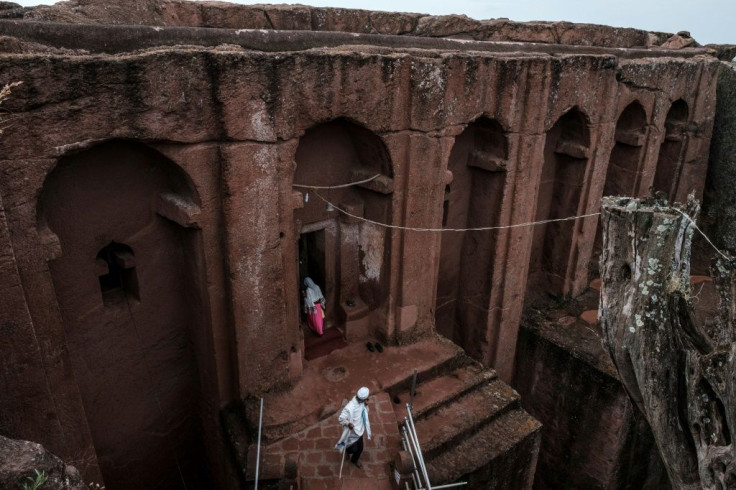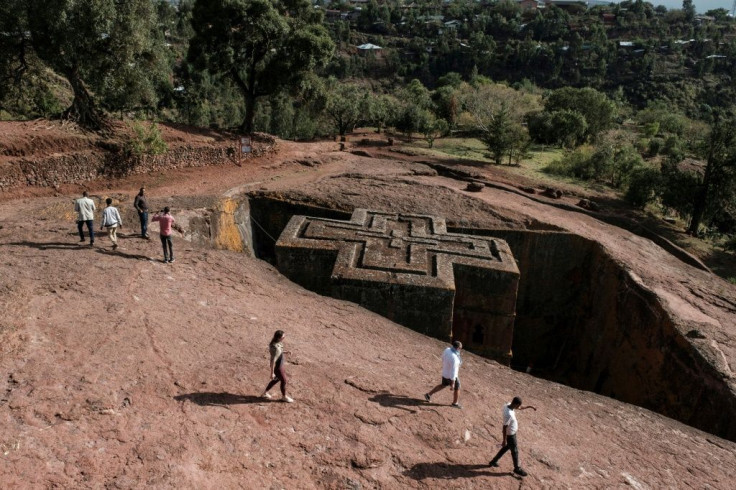Lalibela: Ethiopia's UNESCO Heritage Site Overrun By Rebels
Rebels from Ethiopia's war-hit region of Tigray swept into Lalibela on Thursday, raising fears for the safety of the UNESCO World Heritage Site famed for its 12th-century rock-hewn churches.
The push by the Tigray People's Liberation Front (TPLF) into the regions of Afar and Amhara -- where Lalibela is located -- is the latest turn in a months-long conflict pitting Prime Minister Abiy Ahmed against the rebels.
As concern over the violence grows and calls mount to protect Lalibela, here are a few facts about the heritage site:

Designated a UNESCO World Heritage site in 1978, the Lalibela churches are unique. They are carved from rock and sit below ground level, surrounded by deep, dry moats, with only their roofs visible.
The courtyards surrounding these extraordinary places of worship are reachable only by staircases and tunnels.

Chiselled out of monolithic blocks, the churches are replete with ornate designs and windows carved in the shape of crosses.
The complex is also home to an intricate system of passages, some of which lead to caves and catacombs.

Lalibela, located 680 kilometres (420 miles) north of Addis Ababa, takes its name from King Gebre Mesqel Lalibela.
According to local lore, the monarch built 11 churches with the help of angels after God ordered him to create a "New Jerusalem."
Lalibela is a popular destination for foreign tourists and followers of the Ethiopian Orthodox faith -- the country's largest religion.

Lalibela is no stranger to threats. Long before the site was caught in the crosshairs of the Tigray conflict, its rock composition made it vulnerable to the impact of erosion from Ethiopia's intense rainy season.
A 2008 decision to erect huge tarpaulin shields to keep rain off the historic churches has aroused further concern among the faithful, with many fearing that the shelters could collapse and cause irreparable damage to the site.
Preservationists say the screens, supported by thick metal poles, are designed to sway rather than strain to breaking point in windy weather, but that has done little to ease locals' worries.
In 2019, French President Emmanuel Macron visited Lalibela and agreed to fund a plan to restore the churches as well as maintain the tarpaulin screens until a more permanent restoration is carried out on damaged structures.
This could pave the way for the shelters' replacement with lighter structures, possibly ones that can open and close depending on the weather, while repairs are done.
Lalibela was the focus of a massive manhunt two decades ago, when a 11th-century brass cross known as Afro Ayigeba was stolen from the site, sparking fury among Ethiopians who have a deep attachment to the artifact.
After a two-year search that spanned multiple continents, the sacred cross was finally found. It had wound up in the hands of a Belgian collector, who had bought it in good faith for $25,000 from an Addis Ababa dealer.
Weeks later, it was returned to its rightful place in Lalibela, with thousands of pilgrims, villagers and officials attending its homecoming ceremony.
© Copyright AFP 2024. All rights reserved.





















